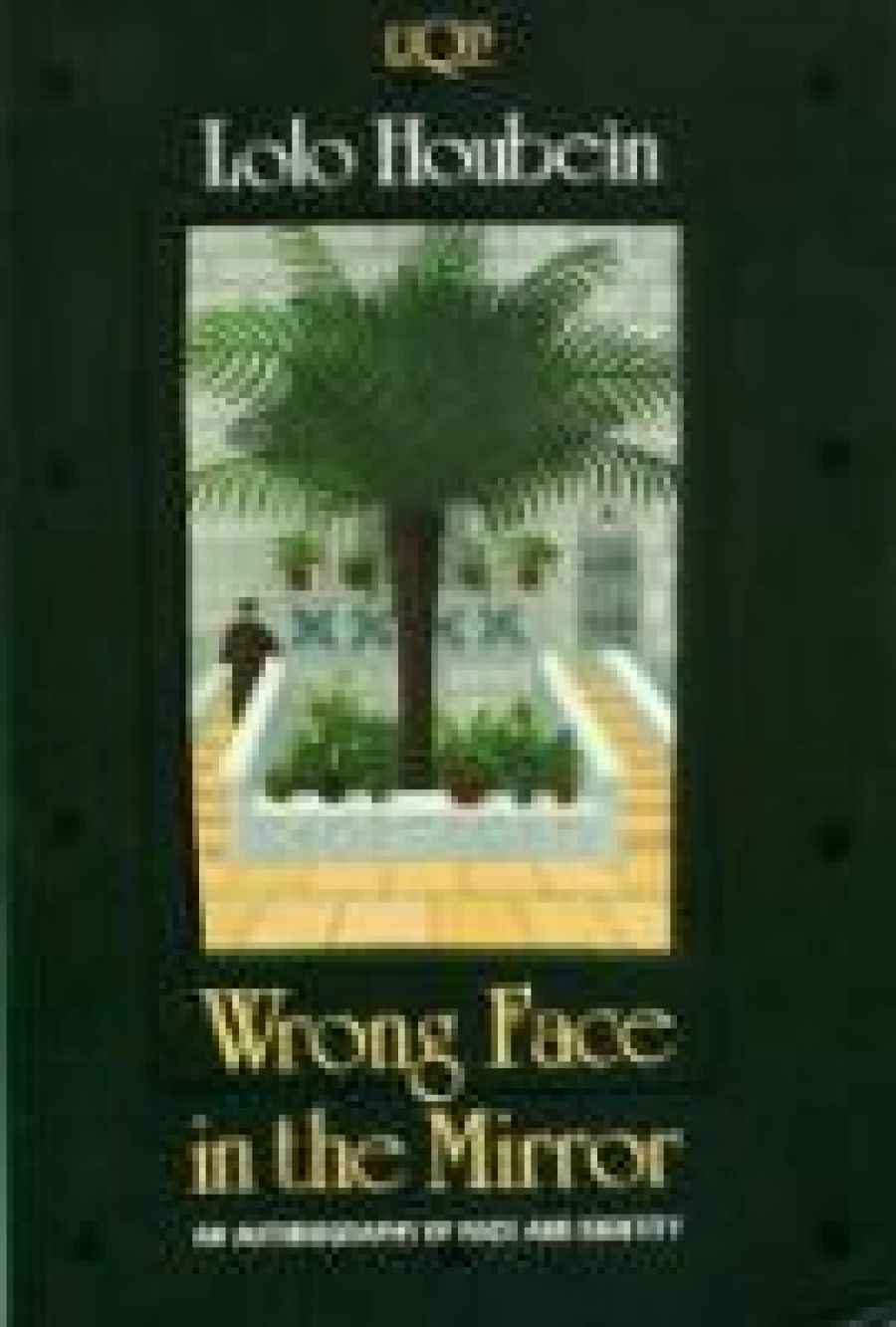
- Free Article: No
- Contents Category: Non-fiction
- Review Article: Yes
- Article Title: Finding a name to fit
- Online Only: No
- Custom Highlight Text:
On the 7 January 1934 in the Dutch town of Hilversum, a child was born and named Jopie Houbein. From her earliest days she felt that neither her face nor her name really fitted her. On the outside she was white, but all her feelings of kinship went out to people of alien races – a Chinese trader, travelling gypsies, school-friends from the East Indies, even a child disguised as St Nicholas’s black helper. One of her early fantasy playmates was the beautiful Indian actor Sabu, the Elephant Boy.
- Book 1 Title: Wrong Face in the Mirror
- Book 1 Subtitle: An Autobiography of Race and Identity
- Book 1 Biblio: University of Queensland Press, 274 pp., $12.95 pb
It will not spoil the reader’s pleasure to know that each of the three wishes eventually came true - after much travail and many false starts.
In an introductory chapter there is an indication that the present work, which concentrates on aspects of race and culture, may be the first of several thematic autobiographies, possibly as many as eight, though there are only hints of two future books envisaged, one concentrating on religion and another on love. This creates minor irritations - again and again an interesting development is interrupted with the promise that this matter will be dealt with in greater detail in a future book.
It is clear that the author is aware she is trying to cram far too much into one volume. ‘Marriage at eighteen, motherhood at nineteen and again at twenty, and divorce at twenty-one led to marriage at twenty-three ...’ And this is only one dimension of her crowded life.
To this must be added migration to Australia, study at an African university, long-term residence in Papua New Guinea, close bonding with Australian Aborigines and, of course, the experience of India, the friendship with Tibetan carpet weavers and the meeting with the Dalai Lama.
The book itself is rather loosely woven, the spiritual and physical journeys making up the background which is over-stitched with colourful impressions of people and places. A particular joy are the early childhood memories with cameos of members of the large and intricate family, as well as portents of the future. For example, the child has an uncanny ability to meditate long before she becomes aware that it is a recognised technique.
Coincidence or fate also plays a notable role. It is her little half-brother’s baby-talk that creates her new name, and later she discovers that Lolo is also the name of a Tibetan tribe where the women are tall and independent! Here and there some well-meant though banal passages of commentary intrude. They are perhaps caused by too much awareness of the originally targeted Dutch readership. Criticism of Australian attitudes to Aborigines and migrants are given in cliched terms, too familiar by now to the Australian reader of this kind of book. Also, in the second half of the book there is far too much impersonal ‘reporting’ which contrasts strangely with the lively observations in the earlier parts. Here is an example, written about Houbein’s experience in Papua New Guinea in its first year of independence:
Having shaken off the burden of Australian administration, they could have acted otherwise, had they been a less magnanimous people. I had been catapulted forever out of that dangerous duality of mind that afflicts the migrant, the ‘us’ and ‘them’ syndrome. In Papua New Guinea that syndrome did not, on the whole, exist for me, as in so many situations I had been made one of ‘them’.
The point about human relationships does not have to be elaborated, it is beautifully demonstrated again and again in the many tales of encounters between strangers whose goodwill successfully communicates across culture and language gaps.
Readers of Lolo Houbein’s prizewinning 1988 novel Walk a Barefoot Road will have the special satisfaction of comparing the work of fiction with aspects of the life, but for any reader the book is an opportunity to become acquainted with a lively, refreshing and original human being.


Comments powered by CComment